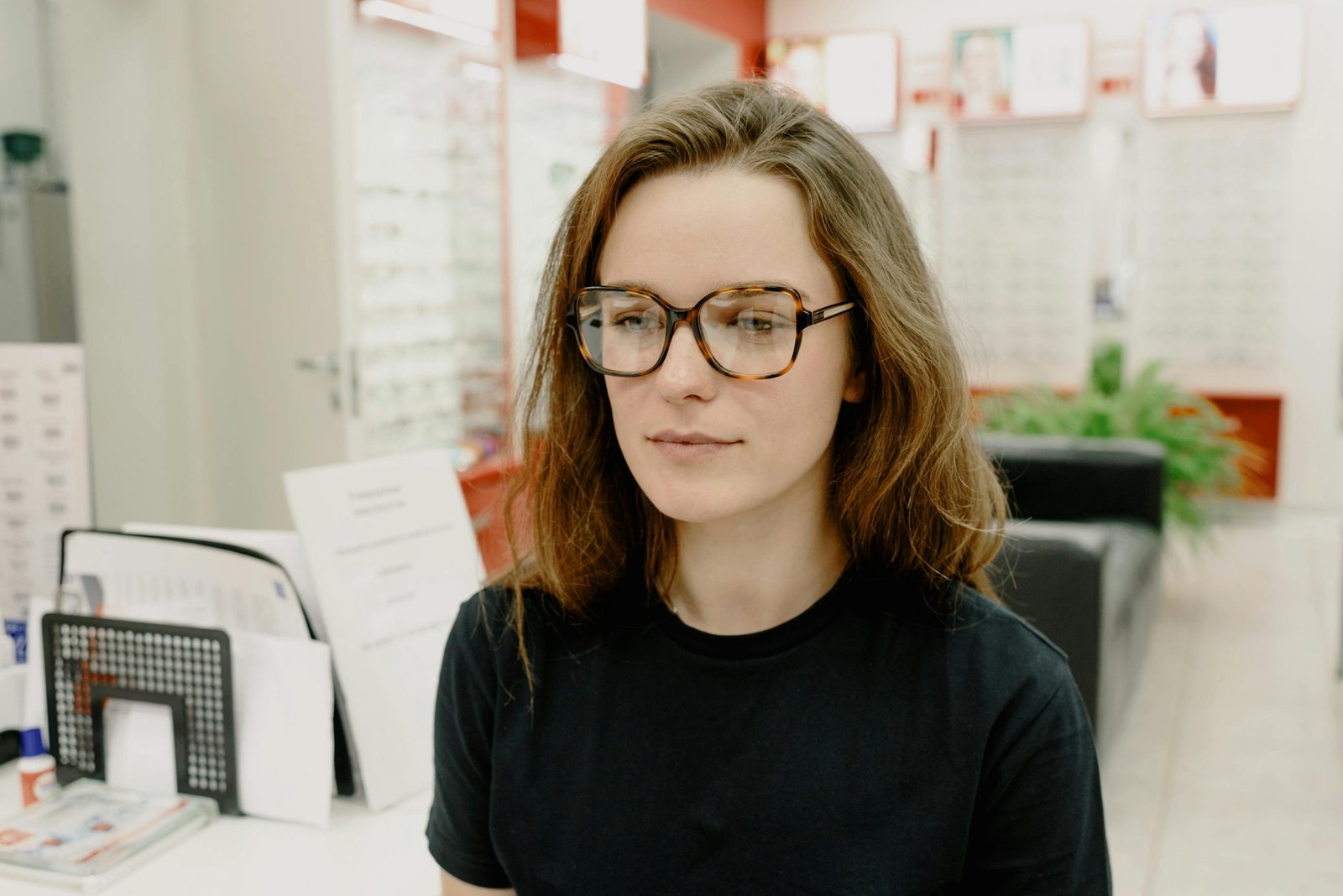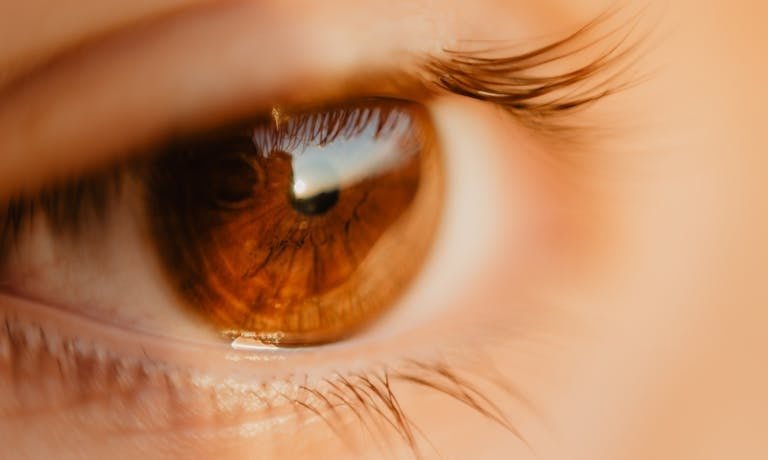How to Improve Eyesight When You Already Wear Glasses
Have you ever wondered whether it is possible to see better than with glasses? The short answer is yes, but there are daily habits and habits to improve your lifestyle that can make your eyes healthier, less tired, and even more functional in the long term.
My name is Laura, and I have spent many years defining how I can take care of my eyes. I have grown to rely on my glasses, although I have come to realise that they are not the only ingredient in the equation of vision.
In this blog, I am going to take you through practical, science-based, and very simple steps that will help you power up your eyes and experience crystal-clear vision even with glasses.
What Can I Do to Heal My Eyesight?
No matter what the state of your eye health is at present, you can take steps today to take care of your eyes and prevent losing your vision in old age, so there is no time like the present to make sure your eyes are strong. Whereas glasses and contact lenses assist in curbing your existing vision effects, they do not essentially sharpen your eyes. This is where dotting care and proper daily routine count.
It has all the tricks of art: Doing eye exercises to keep your eye muscles loose, eating healthy foods to maintain necessary vitamins and antioxidants, and having smart screen time to avoid any digital fatigue.
Methods To Improve Your Eyesight
1. Exercises the 20-20-20 Rule
The 20-20-20 is one of the simplest and fastest ways that enable you to just get some rest for your eyes after spending an hour or two in a row in the presence of the screen.
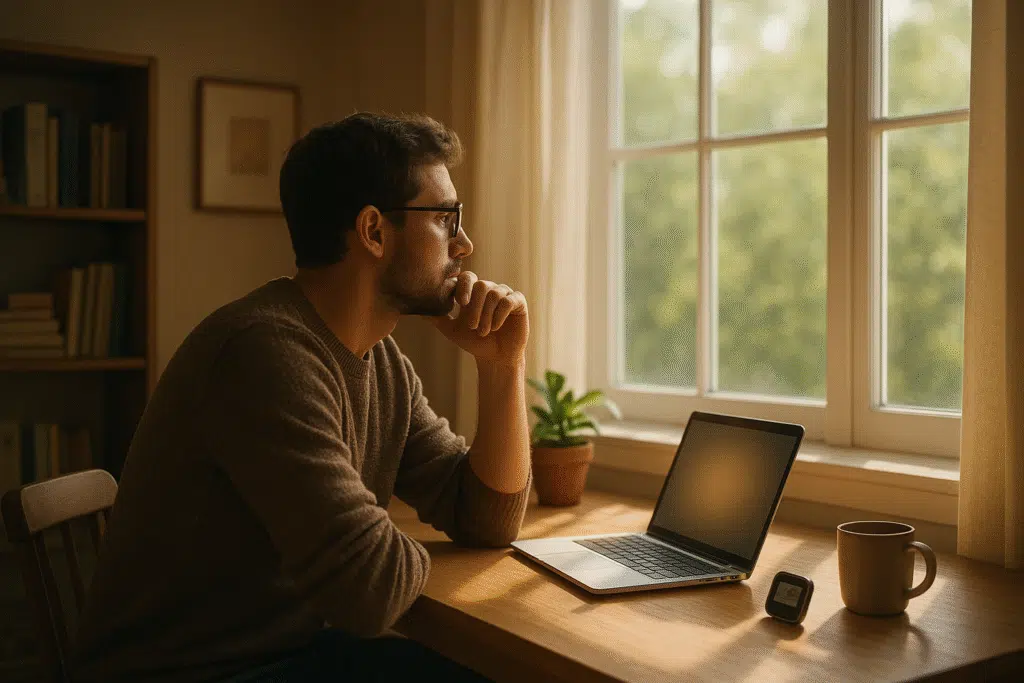
What Is Rule 20-20-20?
Look beyond 20 feet or 20 seconds or so, once every 20-minute cycle. This causes a release of the focusing muscles in the eyes and less strain.
Why It Works
When you look at screens, your eyes tend to fix just at one viewing distance. Such strain wears them down and may result in headaches or blurred vision. The 20-20-20 rule combines to be a mini stretching exercise for the muscles around your eyes.
How I Use It in My Day
- I remind myself every 20 minutes.
- I gaze out a window at a far tree or a building.
- I concentrate on natural blinking to hydrate my eyes.
2. Do Daily Eye Exercises
Yes, your eyes do have muscles, and such muscles, as with any others, do themselves receive benefit by moderate and frequent exercise.
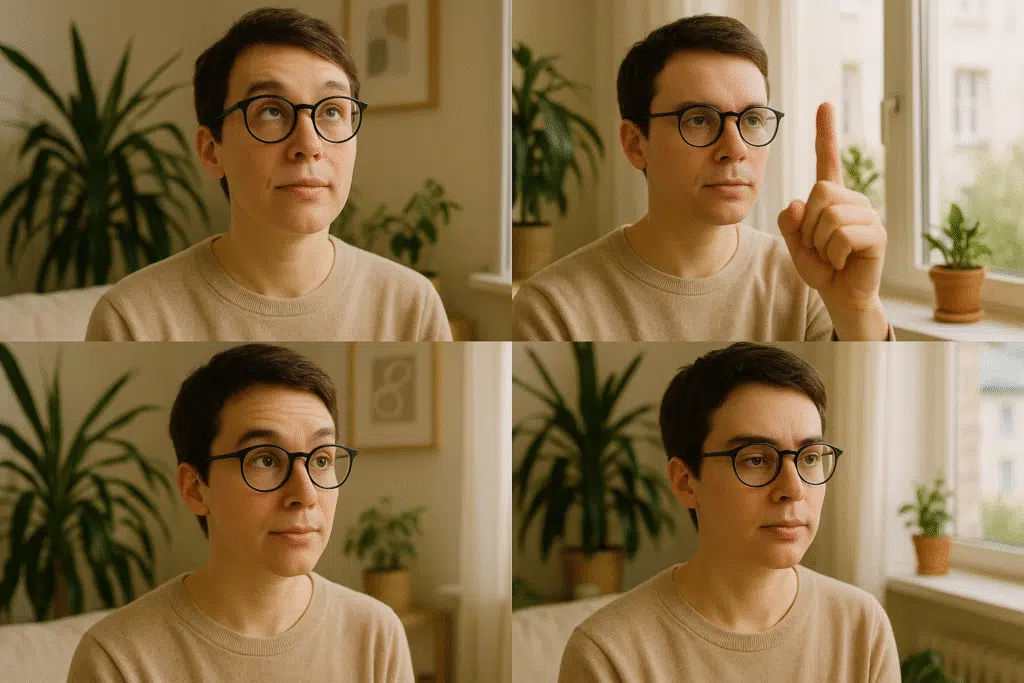
Eye Roll Warm-Up
I slowly roll one eye at a time, clockwise and then counterclockwise, rolling slowly about 5 times each direction. This elevates blood flow.
Near and Far Focus
- Put your thumb 10 inches in front of your face and stare at it, taking 15 seconds.
- Direct your eyes at something 20 feet away, at least, for 15 seconds.
- Repeat 5 times.
The Eight Tracing
See a huge sideways 8 in front of you and follow with your eyes its whole length very slowly (30 seconds up, 30 seconds down).
Benefits I Have Observed
- Less strain in my face.
- More orientation of attention between objects closer and farther away.
- Verified to reduce fatigue on the eyes at the end of the day.
3. Eat Foods That Feed Your Eyes
You would not take a day off at the gym doing legs, would you? Well, your eyes also have to be given the appropriate match.
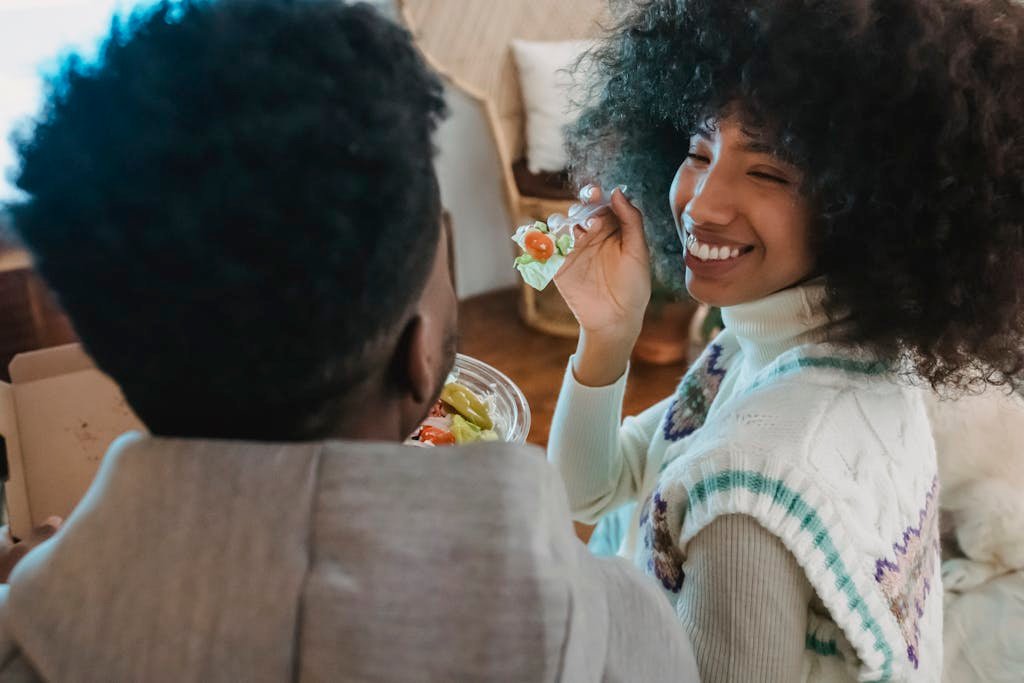
Important Vision Nutrients
- Vitamin A: Vitamin A is vital at night. Comes in carrots, sweet potatoes, and spinach.
- Lutein + Zeaxanthin: Prevent the blue light harm. Kale, eggs, and corn.
- Omega-3 Fatty Acids: Reduce dry eyes. You can get it in walnuts and also in chia seeds, and in salmon.
- Vitamin C/E: Antioxidants. Oranges, sunflower seeds, and almonds.
My Eye-People Dinners
- Breakfast: Omelette strips of spinach flavoured with oranges.
- Lunch: Kale, avocado, sunflower seeds, salmon salad.
- Snacks: hummus and Baby carrots.
Healthful eating is also fantastic as a person can see clearly without mentioning age-related eye diseases such as macular degeneration and cataracts.
Read Also: RGP Lenses vs Soft Lenses: Clearer Vision, Healthier Eyes
4. Curb Screen Time (or Control It Sensibly)
You know how you and I spend a lot of time looking at screens. It is not realistic to avoid them, but it would work to control how we use them.
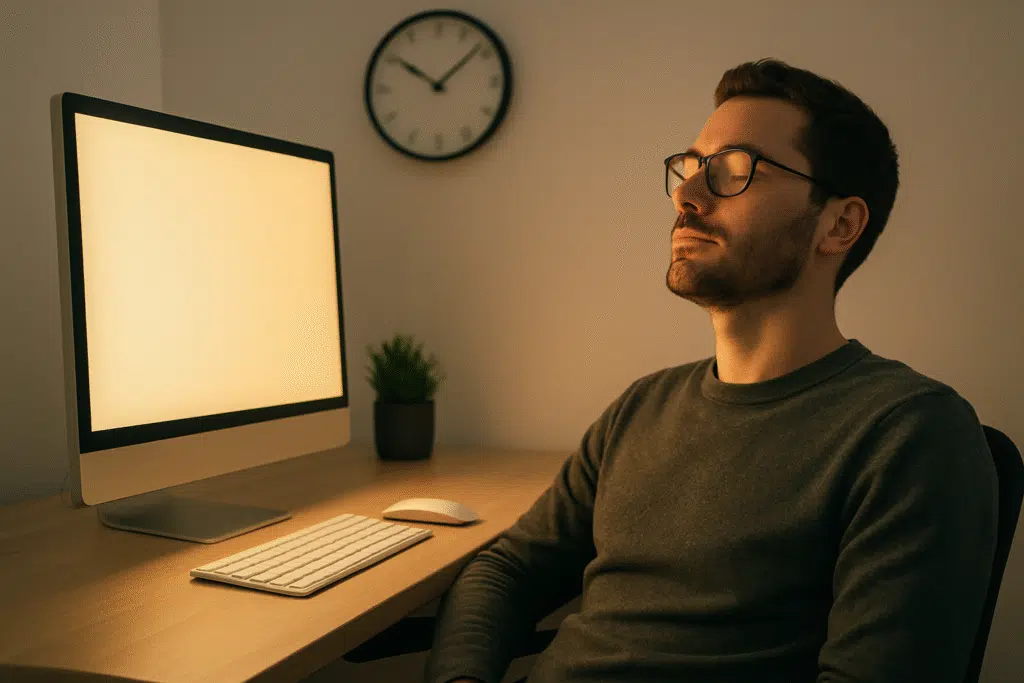
Modify Your Settings
- Brightness: Keep the screen brightness equal to the lighting of the room.
- Font Size: The bigger the font, the lesser you will strain to see.
- Blue Light Filters: wear them especially at night.
Take Micro-Breaks
I use an eye holiday every hour, even more than the 20-20-20 rule, just a minute to close my eyes or go somewhere, take a rest.
Use the Right Distance
Put the screen further away (around 2024 inches) and the top of the screen either at eye level or a bit lower.
5. Get Outside in Natural Light
Your eyes are naturally habitat-oriented, but not in LED-lit rooms.
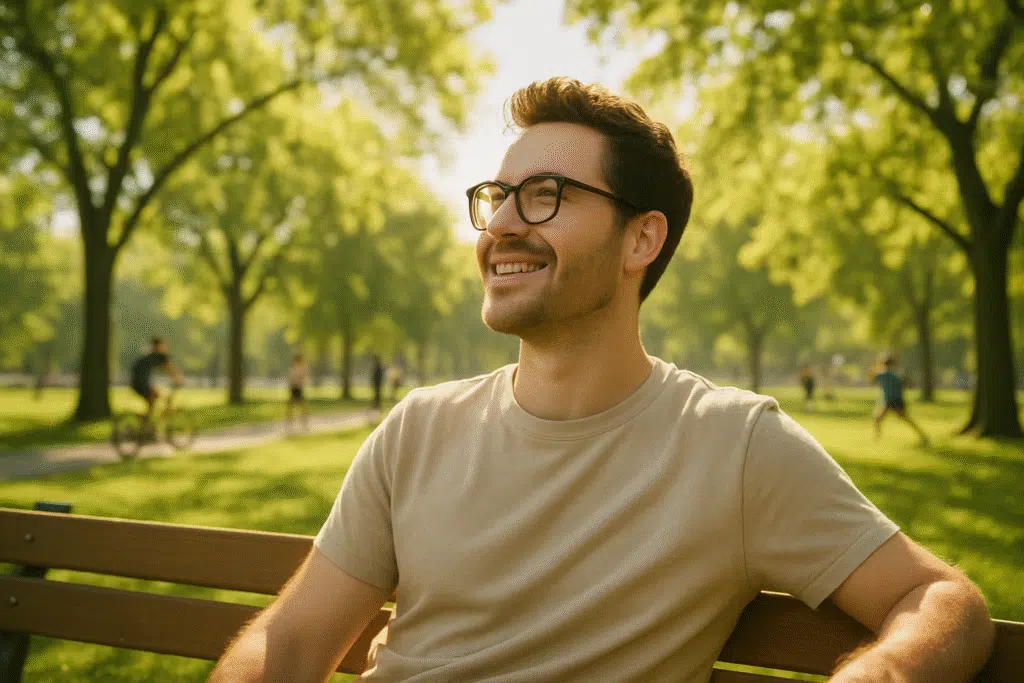
Why Natural Light Matters
Being exposed to the outside assists your eyes to keep their focus, their flexibility, and limits the risk of developing nearsightedness in children and young individuals.
My Outdoor Eye-Friendly Activities
- Park walks in the morning.
- Hiking tours on weekends.
- Reading or gardening from the balcony.
Take at least 1-2 hours of outdoor time a day time shooting. And yes, wear UV-cut sunnies; you are not baking your eyes, you are protecting them.
6. Keep Your Glasses Prescription Updated
The wrong prescription may cause your eyes to strain and even blurred vision, and headaches.
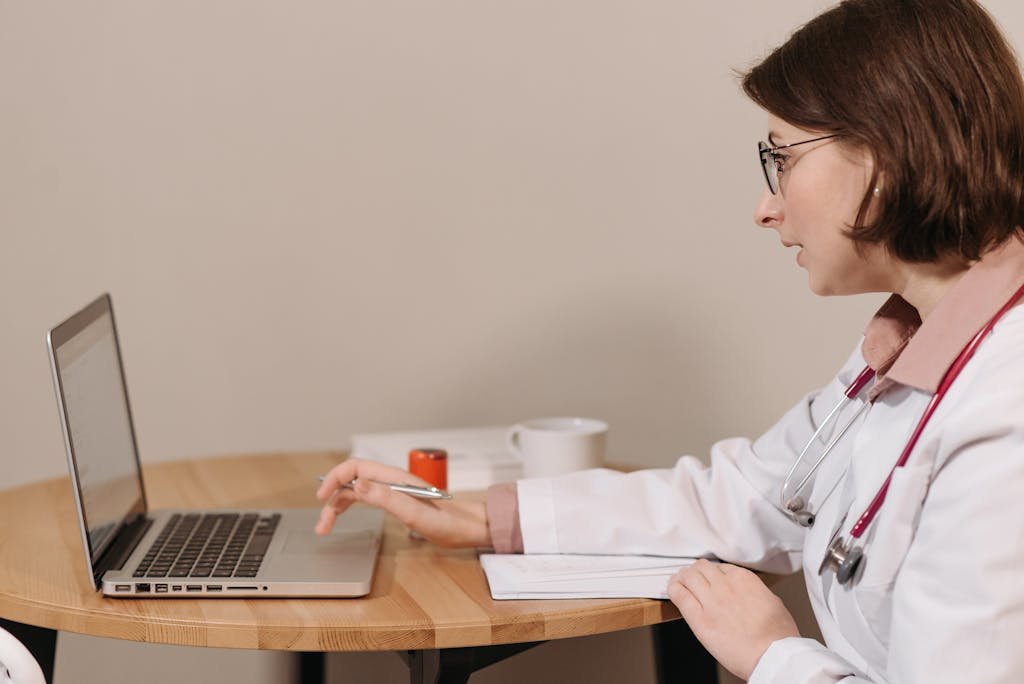
How I Keep Up With It
- I have my eyes examined at least once every 12 months or more when I feel a difference.
- I specifically enquire my optometrist about minor adjustments in needs (e.g., computer vs. driving).
You May Need an Update
- The increased squinting.
- Reading or screenwork headaches.
- That visual perception feels off with glasses on.
Your glasses are visual companions; up to date with them, your eyes remain relaxed, and you perform in optimal condition.
FAQs
Could glasses help in improving eyesight?
Yes. Glasses restore vision, and there are healthy routines, such as eye exercises, decent food, and less time in front of the screen, that will support better vision.
How naturally may I stop wearing glasses?
To eliminate the dependence, you may experiment a bit with eye exercises, outdoors, and healthy vision habits, but never do that without clearance from an eye specialist.
Is my eyesight 2.50 bad?
A prescription of -2.50 is moderate nearsightedness. It is not high, yet you will most probably require glasses or contacts to see far.
Is it possible to improve eyesight naturally?
Yes, partially. Healthy nutrition, playing outside, light, and eye strain are ways that help take care of healthy and functioning eyes.
Read Also: Blue Light Glasses: Benefits, Side Effects & How They Work
Final Words
You should wear glasses, as it does not imply that your vision is lost, not at all. The routines you create today may preserve, augment, and sustain your vision over the years. I have understood the fact that simple everyday actions make a tangible difference in the health and well-being of your eyes; it can be the 20-20-20 rule, proper food, screen breaks, etc. Vision care is all about changing habits to live a healthy eye lifestyle.
The key to the overall effect is the ability to nurture your body with the appropriate nutrients, offer a daily break to your eyes, and stay current with professional visits.

